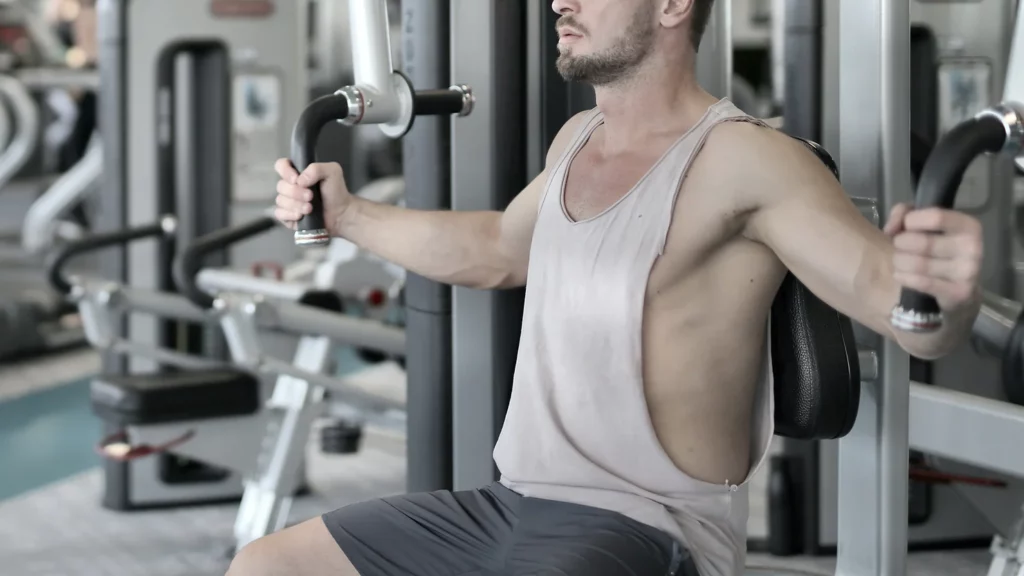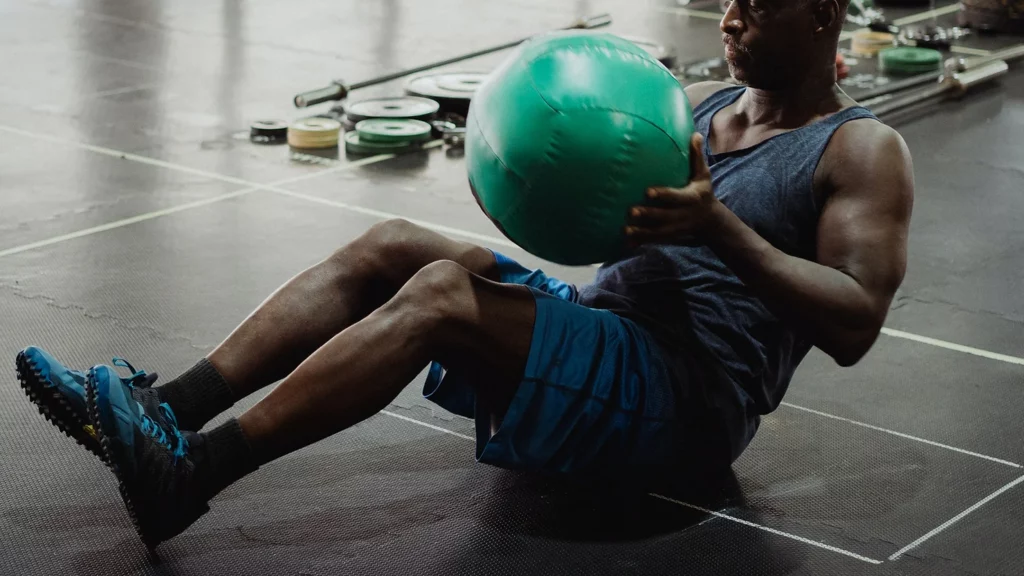Benefits of the Copenhagen Plank
The Copenhagen plank is a great exercise for a few reasons. The first is that it strengthens your frontal plane. These muscles consist of the gluteus medius and adductors. These muscles are often weak in people, which can lead to knee valgus (knock knees) and other issues. The knees caving in is often the cause of many injuries. The Copenhagen plank helps to avoid these issues by strengthening the muscles that keep the knees stable.
The second reason the Copenhagen plank is great is that it helps improve your posture. This exercise does this by working on your thoracic mobility and scapular stability. This can help place your shoulders in a better position and help you avoid slouching.
This movement is still a plank exercise meaning it will work your core. The muscles of the core consist of the rectus abdominis, transverse abdominis, erector spinae, and the internal and external obliques. The Copenhagen plank exercise helps to work all of these muscles.
The last reason is that the Copenhagen plank will help improve your balance and proprioception. This is due to the fact that the exercise challenges your proprioceptive system by placing your body in an unstable position. Furthermore, people are not accustomed to being in this position often and by doing the Copenhagen plank, you can help your proprioceptive system become more aware of where your body is in space.
How to perform the Copenhagen plank?
There are a few things you need to keep in mind when doing a Copenhagen plank to make sure you are doing it correctly. First, keep your body in a straight line from your head to your heels. Second, do not let your hips sag or stick up in the air. Third, squeeze your glutes and engage your core throughout the entire exercise. Lastly, breathe evenly throughout the exercise. If you keep these things in mind when doing a Copenhagen plank, you will be sure to get the most out of this exercise. Now we will look at how to properly execute this exercise.
To perform this movement:
-
Begin with aligning yourself perpendicular to a bench.
-
Get into a stance similar to a side plank with your weight resting on your forearm, next you will place your front leg on top of the bench.
-
Lift your hips up so that your body forms a straight line from your head to your heels.
-
Raise your lower leg, bringing it parallel to the ground.
-
Squeeze your glutes and engage your core and breathe evenly throughout the movement.
-
Hold this position for 30-60 seconds before repeating it on the other side.
Variations of the Adductor Plank
There are a few variations of the Copenhagen plank that you can do to keep this exercise challenging.
Variation #1: Weighted Copenhagen Plank
One way to make the Copenhagen plank more challenging is to add weight to it. To do this, you can hold a dumbbell in your hand while you perform the exercise. This will make the exercise more difficult and will force your muscles to work harder.
To perform this movement:
-
Place a dumbbell on the ground next to you.
-
Get into the starting position of the Copenhagen plank with your weight resting on your forearm and your upper leg on the bench.
-
Pick up the dumbbell and hold it in your hand, while holding the weight up forming a “T” with your arms.
-
Raise your hips so that your body forms a straight line from your head to your heels.
-
Lift your lower leg, bringing it parallel to the ground.
-
Squeeze your glutes and engage your core and breathe evenly throughout the movement.
-
Hold this position for 30-60 seconds before repeating it on the other side.
Variation #2: Bent Knee Copenhagen Plank
Another variation of the Copenhagen plank is to keep your knees bent throughout the entire exercise. This variation is great for those who would like to lessen the load on their adductors.
To perform this movement:
-
Begin with aligning yourself perpendicular to a bench.
-
Get into a stance similar to a side plank with your weight resting on your forearm, next you will place your front leg on top of the bench.
-
Lift your hips up so that your body forms a straight line from your head to your heels.
-
Raise your lower leg, bringing it parallel to the ground.
-
Bend the knee of the lower leg to make the exercise easier.
-
Squeeze your glutes and engage your core and breathe evenly throughout the movement.
-
Hold this position for 30-60 seconds before repeating it on the other side.
Variation #3: Foot on Ground Copenhagen Plank
The third variation of the Copenhagen plank is to keep your lower foot on the ground throughout the entire exercise. This variation is the easiest variation and most effective for those who are new to this exercise.
To perform this movement:
-
Begin with aligning yourself perpendicular to a bench.
-
Get into a stance similar to a side plank with your weight resting on your forearm, next you will place your front leg on top of the bench.
-
Lift your hips up so that your body forms a straight line from your head to your heels.
-
Instead of raising your lower leg keep the foot of the lower leg on the ground to make the exercise easier.
-
Squeeze your glutes and engage your core and breathe evenly throughout the movement.
-
Hold this position for 30-60 seconds before repeating it on the other side.
Variation #4: Resistance band Copenhagen Plank
The final variation of the Copenhagen plank is to use a resistance band. This variation is necessary for those who don’t have a bench to rest their leg on.
To perform this movement:
-
Begin by looping a resistance band around a sturdy post.
-
Get into the starting position of the Copenhagen plank with your weight resting on your forearm and your upper leg through the resistance band.
-
Lift your hips up so that your body forms a straight line from your head to your heels.
-
Raise your lower leg, bringing it parallel to the ground.
-
Squeeze your glutes and engage your core and breathe evenly throughout the movement.
-
Hold this position for 30-60 seconds before repeating it on the other side.
Summary
The Copenhagen plank is a great exercise for building the muscles of the frontal plane. The four main variations of the Copenhagen plank are the regular variation, the bent knee variation, the foot-on-ground variation, and the resistance band variation. Each of these variations has its own benefits and can be performed by anyone. Just make sure to keep your form in check and to avoid common mistakes such as not engaging your core or not keeping your body in a straight line. With proper form and execution, the Copenhagen plank is a great exercise for building muscle and improving strength/stability.
Are you looking to get fit? Look no further! Our fitness programs are designed to help you build a strong and aesthetic physique. We also provide easy-to-follow routines that will fit any schedule. With our fitness programs, you'll have the tools you need to build muscle and achieve your fitness goals. Click the link below to get started!



